Our research group has published multiple papers on semiconductor manufacturing and new energy batteries in international authoritative journals
Recently, Wei Yuxiang, Luo Wenjun, Wang Yitian, Wang Yipu, Yang Pei, and other students from Glasgow College have multiple high-level papers published respectively as first authors in respected journals, such as Engineering Applications of Artificial Intelligence, a top journal in engineering technology, IEEE Transactions on Instrumentation & Measurement, an authoritative journal in instrument and manufacture. IEEE Transactions on Semiconductor Manufacturing, a leading journal in semiconductor manufacturing. Journal of Energy Storage, a prestigious journal in new energy, and Measurement Science and Technology, a journal of prestige in measurement technology. Plus, several papers of quality on semiconductor manufacturing and new energy batteries, and one on neural network security, are published in ICIP 2022 (International Conference on Image Processing). UESTC is the first author unit for the papers mentioned above.
The above students are all from the Smart Star Research Group of Glasgow College. Since its establishment several years ago, team members have made sound progress in various fields such as artificial intelligence, deep learning, semiconductor manufacturing, new energy batteries, medical information analysis, etc. Besides, Liu Jiale stood out from 1692 competitors and won the second prize in the 2022 National Digital Car Competition with distinction.
The journal paper "Composite Wafer Defect Recognition Framework based on Multi-View Dynamic Feature Enhancement with Class-Specific Classifier" written by student Luowenjun was accepted by IEEE Transactions on Instrumentation & Measurement (SCI Q2, impact factor 5.332) in March 2023. To improve the recognition ability of composite wafer defects, Luo Wenjun proposed a composite wafer defect recognition framework based on multi-view dynamic feature enhancement module and class-specific classifier (Figure 1). This framework can selectively extract information from composite wafer defect images from multiple perspectives, and adaptively enhance them accordingly. Furthermore, the proposed framework applies a specific classifier that uses an attention mechanism to recalibrate the features of each type of basic defect respectively. The experimental results show that the framework can effectively identify defects of compound types, outperforming other existing comparative methods.
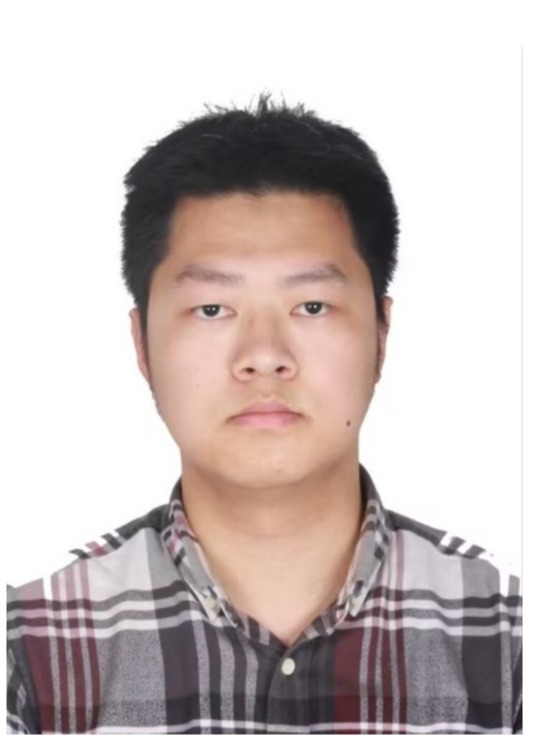
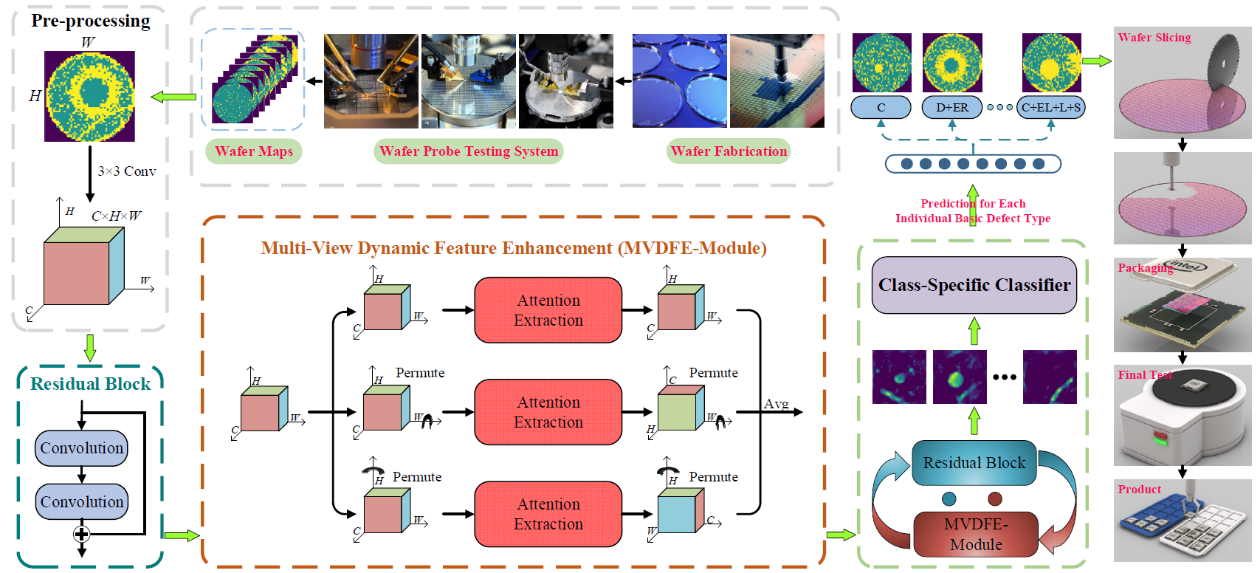
Figure 1. Compound wafer defect recognition framework based on multi-view dynamic feature enhancement module and class-specific classifier
The journal paper "Wavelet Integrated Attention Network with Multi-Resolution Frequency Learning for Mixed-Type Wafer Defect Recognition" authored by Wei Yuxiang was published in Engineering Applications of Artificial Intelligence (SCI Q2, impact factor 7.802) in February 2023. Regarding the problem of semiconductor wafer defect recognition accompanied by noise, Wei Yuxiang proposed a multi-resolution wavelet integrated attention network framework, which intensively integrates discrete wavelet transform and convolutional neural network, allowing the model to obtain hidden information from different frequency components and their positional information (Figure 2). Moreover, this study employs different levels of wavelet transforms to interpret images of different resolutions, thus elaborating the acquired features from different perspectives. The experimental results indicate that the proposed framework overshadows existing comparative methods with superior performance on data of higher noise.

Figure 2. Attention network framework based on multi-resolution wavelet integration
Wang Yipu wrote the journal article "Wavelet Attention-Powered Neural Network Framework with Hierarchical Dynamic Frequency Learning for Lithium-ion Battery State of Health Prediction", which was published in the Journal of Energy Storage (SCI Q2, impact factor 8.907) in February 2023. To accurately estimate and predict the health status of lithium-ion batteries, he proposed a hierarchical dynamic frequency learning framework driven by wavelet attention (Figure 3). The framework extends CNN's feature learning from the time domain to the frequency domain, enabling CNN to learn frequencies and separate frequency components with different intervals. On top of that, the framework implements hierarchical dynamic frequency learning, which can automatically focus on valuable frequency information, discarding unwanted noise or unrelated information. The experimental results demonstrate the framework’s accuracy of prediction on battery health status, whose performance is superior to the state-of-the-art methods.

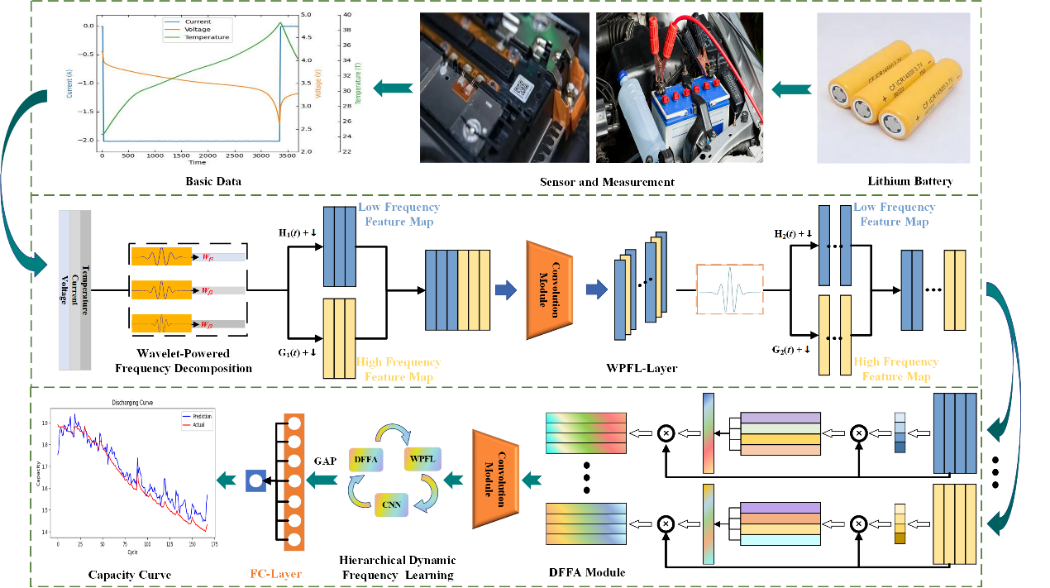
Figure 3. Lithium-ion battery health prediction framework based on wavelet attention
Wang Yitian is the author of the journal paper "A Class Imbalanced Wafer Defect Classification Framework Based on Variational Autoencoder Generative Adversarial Network" published in November 2022 in Measurement Science and Technology (SCI Q4, impact factor 2.398). Wang Yitian explored the application of the VAEGAN network in the field of wafer defect detection, innovatively combining the generative models VAE and GAN to complete the expansion of imbalanced defect samples (Figure 4). The model utilizes the advantages of the VAE network in generating small image samples, combined with the discriminator to distinguish between real and fake generated samples, avoiding problems such as feature loss, blurring, and randomness in generated images. Meanwhile, a “Validation” method introduced in the model helps control the diversity and accuracy of generated samples by adjusting parameters, thus obtaining better training data. The remarkable performance achieved through this method surpasses any other comparative method.

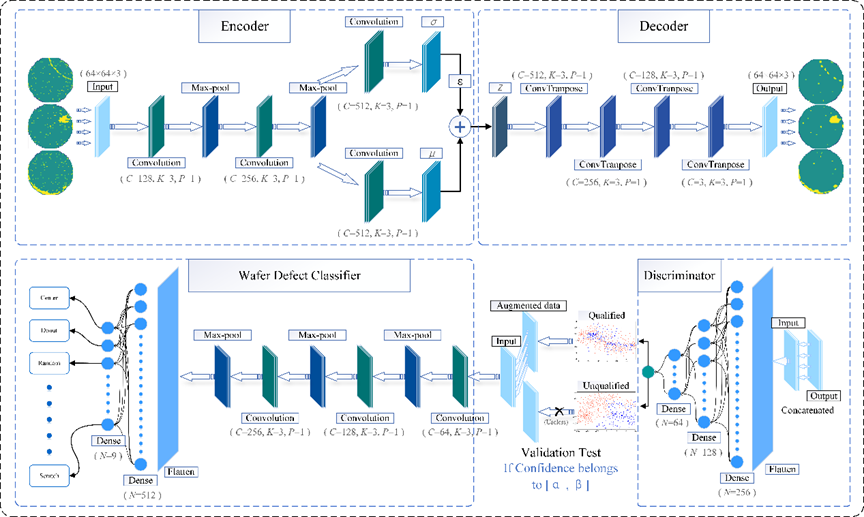
Figure 4. A VAEGAN-based framework for imbalanced semiconductor crystal defect recognition
The conference paper "Regional Saliency Map Attack for Medical Image Segmentation" written by Yang Pei was published in October 2022 at the 2022 IEEE International Conference on Image Processing (ICIP 2022). The Region Saliency Map Attack (RSMA) algorithm is presented in the paper to perform the multi-organ segmentation task of medical images, which completes the neural work attack by perturbing only the local area near specific organs, with most of the images uncontaminated (Figure 5). In addition, this method exploits mixed information from different channels via a saliency map to generate more imperceptible perturbation modes.
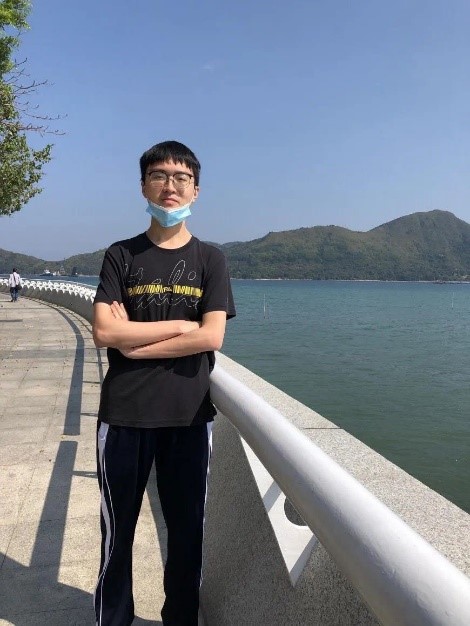
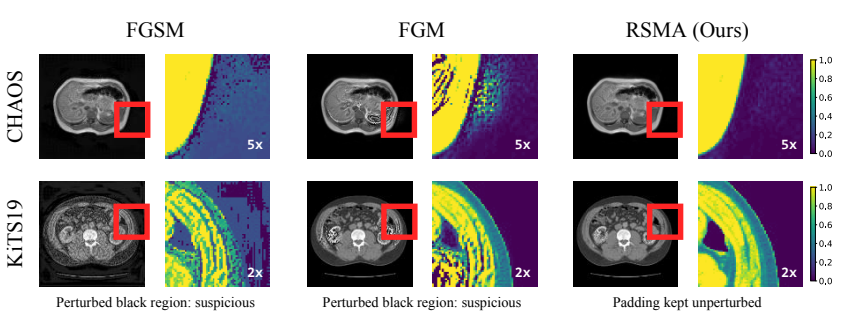
Figure 5: Visualization of adversarial examples on general and medical datasets
The work "New Energy Vehicle Power Battery Safety Risk Assessment and Failure Warning" by Jiale Liu and the RRML team from the Department of Industrial Engineering of Tsinghua University won the second prize among 1692 teams in the 2022 National Digital Automotive Competition after several rounds of competition. The work, centered on the past six months’ data on 10 pure electric passenger vehicles provided by the organizing committee of the digital competition, conducts power battery safety risk assessment and fault warning for online running vehicles. Through a battery failure estimation model built on pre-processing of electric vehicles’ online data and on analysis of their operation status, the battery failure was detected and warned timely to ensure the safe operation of new energy vehicles.
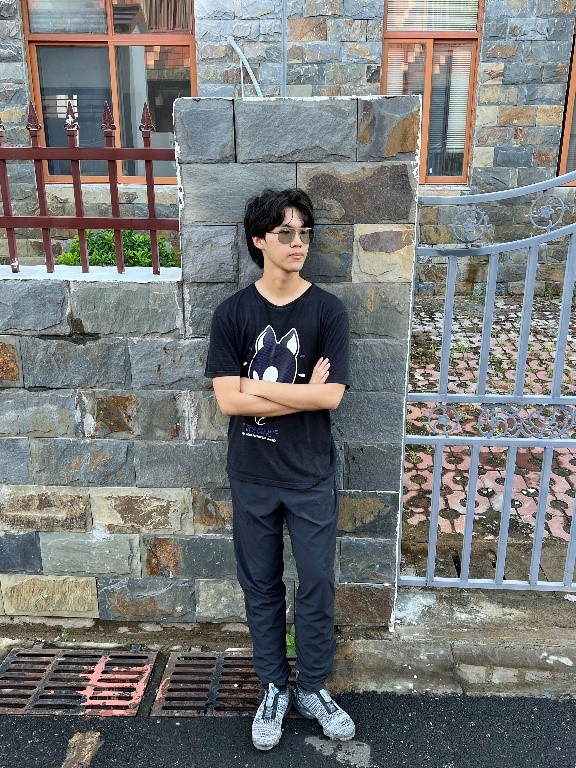
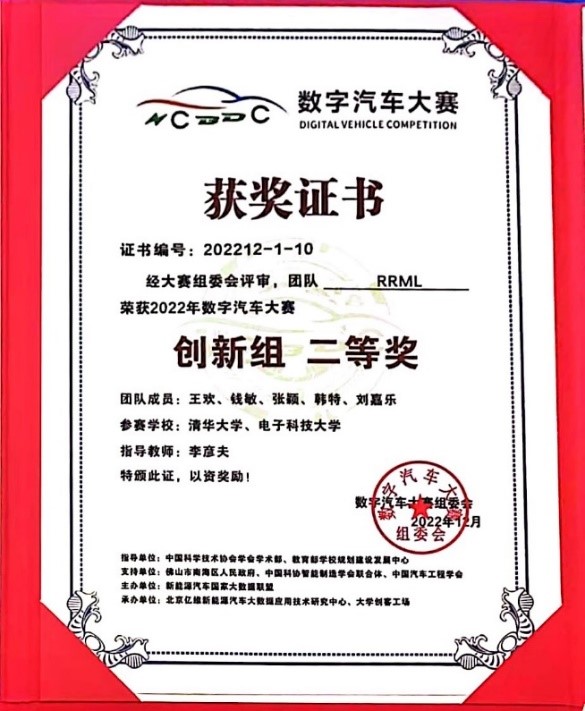
With the aim of cultivating international innovation talents in Engineering, Glasgow College tries to enrich extracurricular education, stimulate students' innovative consciousness, foster the innovative spirit, and enhance innovative ability. To build a progressive “second classroom” innovation training platform that spans Years 1-4, Glasgow College encourages students’ participation in various projects, to name a few, the “Inimitable” extracurricular innovation project for freshmen, the National College Student’s Innovation and Entrepreneurship Training Program, the “Learn from the investigation” scientific research internship project, graduation design project, enterprise internship project, etc. To create a scientific innovation and cultivation system of “competition to promote both teaching and learning”, discipline competitions such as the “Embedded Chip and System Design Competition” are attached to great significance as an engine. In a bid to deepen the effectiveness of education in scientific research comprehensively, efforts are made to hold seminars, lectures, and sharing meetings on scientific innovations, invite professors and senior students to regularly share cutting-edge information on competition experience, publication of high-level papers, and visits to scientific research laboratory, which serve as the inspiration for scientific research inspiration and motivation for an interdisciplinary and prospective team.
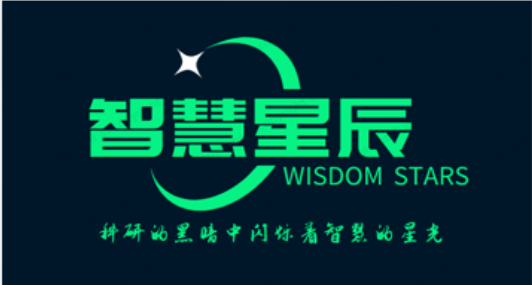
Team introduction:
The “Smart Star” research group, a student-led team without a professor, specializing in cutting-edge artificial intelligence and deep learning technologies, is dedicated to research in fields such as intelligent unmanned systems, semiconductor manufacturing, new energy equipment, lithium-ion batteries, and medical information. Members hold weekly meetings voluntarily to discuss research issues, and share cutting-edge papers, experiences, and insights. Under the assistance of Dr. Huan Wang (a 2019 graduate alumnus of the School of Mechanical and Electrical Engineering, Tsinghua University) and group seniors, team members accomplish research, identify problems, explore solutions, and complete paper writing, revision and submission. Currently, the group consisting of 20 main members is in charge of one Sichuan Sapling Engineering project. In recent years, they have published more than 20 academic papers in international journals and conferences, and have won 5 major subject competitions including the National Internet Competition.
New members are always welcome to The Glasgow College Smart Star Research Group. The team will provide detailed guidance to students throughout the process.
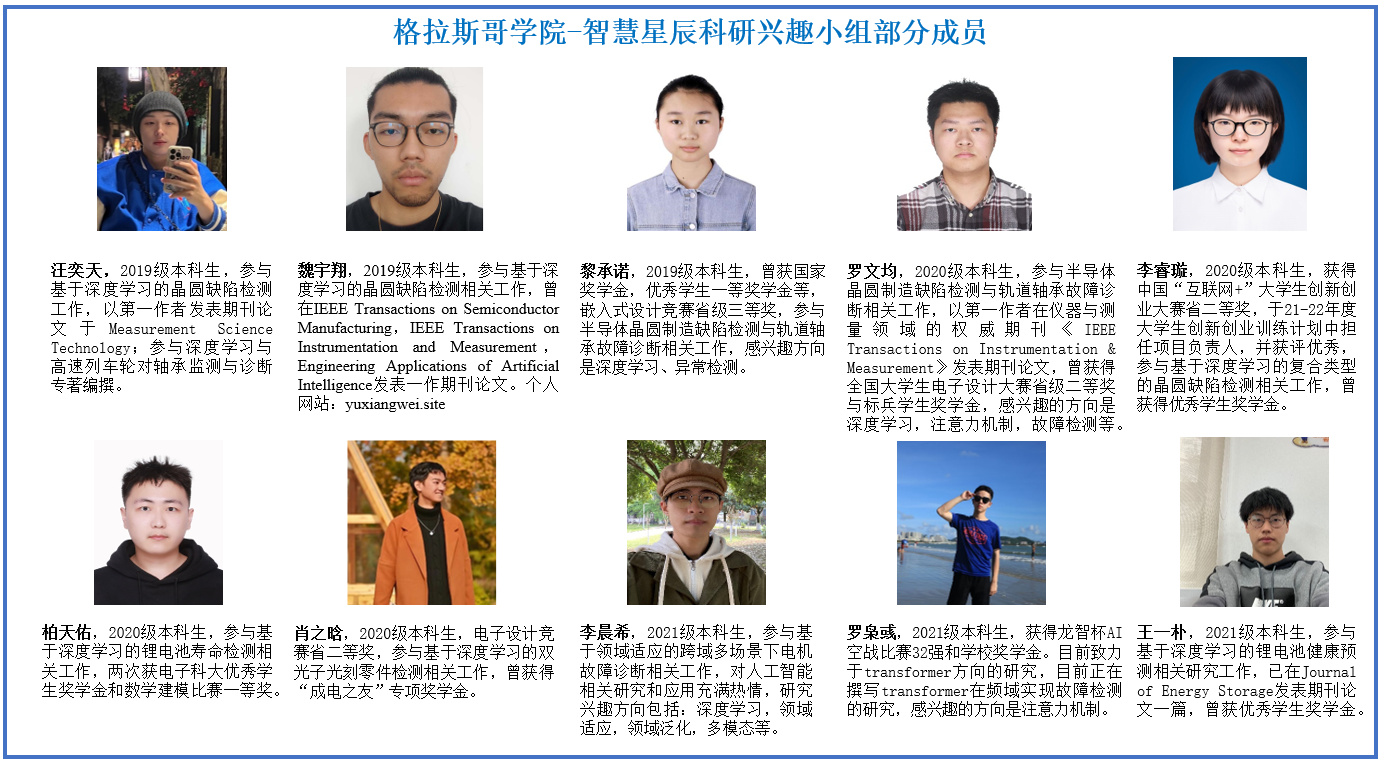
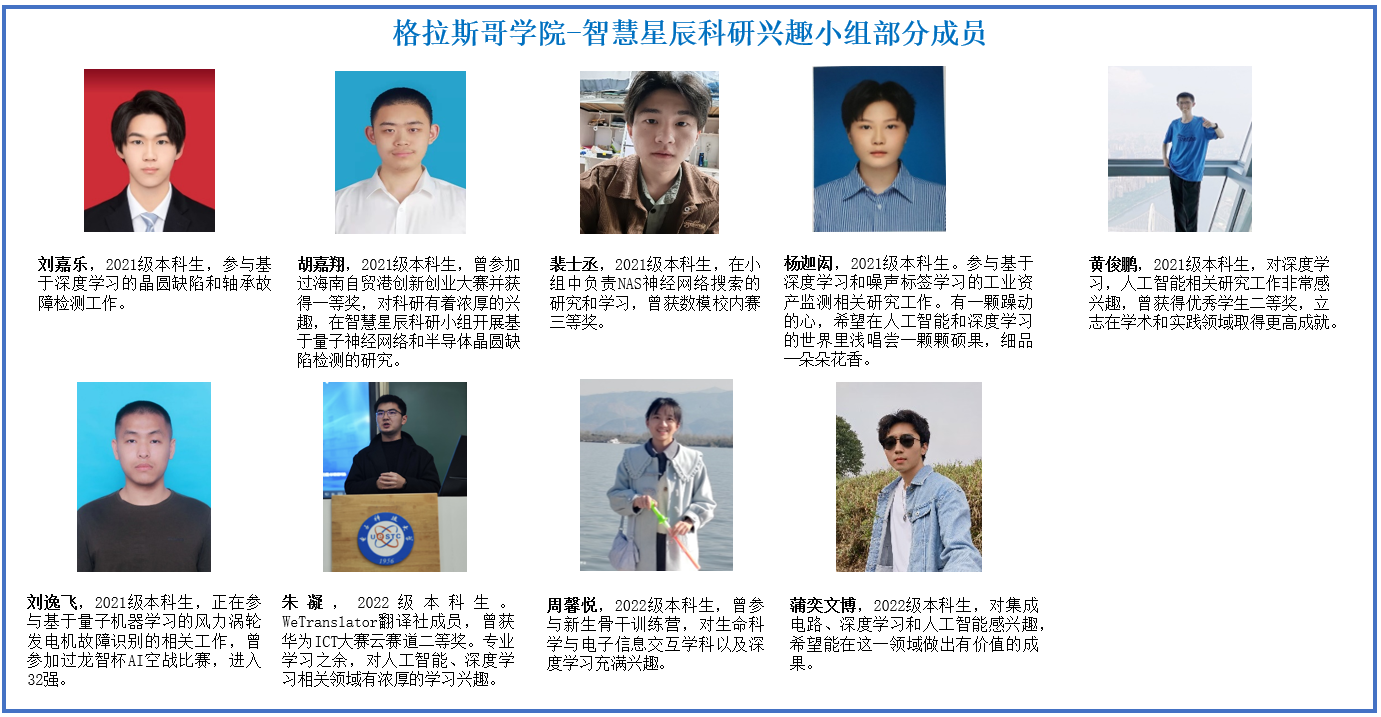
Papers mentioned:
1. Wenjun Luo and Huan Wang.” Composite Wafer Defect Recognition Framework based on Multi-View Dynamic Feature Enhancement with Class-Specific Classifier”, IEEE Transactions on Instrumentation and Measurement, 2023, IF 5.332.
2. Yuxiang Wei and Huan Wang.” Wavelet Integrated Attention Network with Multi-Resolution Frequency Learning for Mixed-Type Wafer Defect Recognition”, Engineering Applications of Artificial Intelligence, 2023, IF 7.802.
3. Yipu Wang and Huan Wang.” Wavelet Attention-Powered Neural Network Framework with Hierarchical Dynamic Frequency Learning for Lithium-ion Battery State of Health Prediction”, Journal of Energy Storage, 2023, IF 8.907.
4. Yitian Wang, Yuxiang Wei, Huan Wang.”A Class Imbalanced Wafer Defect Classification Framework Based on Variational Autoencoder Generative Adversarial Network”, Measurement Science and Technology, 2022, IF 2.398.
5. Pei Yang and Huan Wang. “Regional Saliency Map Attack for Medical Image Segmentation”, ICIP 2022
Translated by: Zhao Sixian
Proofread by: Jennifer, Yi Shuying







